Monarch butterflies are possibly the most widely known butterfly species in North America. Depending on the region, they are also referred to as monarch, black veined brown, milkweed, wanderer, and common tiger. It has an easily-recognizable pattern, and makes a stunning appearance during its lengthy migration across North America. Read on to learn about the monarch butterfly.
Description of the Monarch Butterfly
The monarch has similar coloration to, and is frequently mistaken for, the viceroy butterfly. Viceroy butterflies are considerably smaller than monarchs, and have an additional black stripe on the rear wing.
Monarch’s wings are orange in color, with black or dark-colored margins and veins. The margins, or outer edges, of the wings are also dotted with white spots. While in flight, they have a slow, sailing wing pattern, rather than flapping rapidly.
Interesting Facts About the Monarch Butterfly
Monarch butterflies are beautiful insects with bright coloration and an easily recognizable pattern. Different populations live in different regions, some of which participate in long migrations.
- High Flying – Even though they are light and fragile creatures, monarchs are capable of flying to extreme altitudes. During flight, they can soar up to 10,000 ft. in the air! This is especially helpful for migrating populations.
- Bright Warning – The beautiful coloration and patterns are more than just for show. Like many other species, monarch butterflies use their bright coloration as a warning to predators that they are unpalatable and toxic.
- Major Migration – Populations of monarchs in the northern United States migrate by the millions to Central Mexico every fall. This trip spans over 3,000 miles, and can travel up to 250 miles in a single day. They must migrate because they cannot survive the cold conditions of winter.
- Metamorphosis – Baby butterflies must go through a metamorphosis to reach their adult form. Each one hatches from the egg as a caterpillar, and eats a lot of food. Once the caterpillar has increased in size, it will hang upside down, and incase itself in a protective layer. This process creates a chrysalis, and inside, the caterpillar transforms into a butterfly. When it is ready to hatch, the chrysalis becomes clear, and the butterfly emerges, dries, and flies away.
Habitat of the Monarch Butterfly
The choice of habitat ranges based upon the season. They are much more particular about their habitat while overwintering, and they will choose optimal environments for survival. The most important elements of their environment include the adequate sunlight for thermoregulation, and easy access to a slow-moving water source, such as a stream.
These butterflies also choose vegetation to roost on, such as trees and bushes, which gives them protection from predators. Some frequently chosen species include basswoods, oaks, willows, pecans, cottonwoods, sumacs, and more.
Distribution of the Monarch Butterfly
There are two primary populations of monarch butterflies, the western population, and the eastern population. The eastern population resides in North America, and the western population resides in Australia and the eastern Pacific islands.
The eastern population flourishes from southern Canada to Mexico, and northern South America. The western population resides in Australia, the Philippines, New Zealand, Papua New Guinea, and other nearby islands.
Diet of the Monarch Butterfly
Monarch butterfly caterpillars will eat only milkweed, and cannot feed on any other plant. The larvae eat leaves and plant matter, and the adults feed on the nectar of flowers. They also obtain water from damp vegetation and puddles. Some species of flower that adult monarch butterflies will feed on include milkweed, Indian hemp, wild carrot, coneflowers, aster, thistle, horseweed, lilac, goldenrod, alfalfa, and more.
Monarch Butterfly and Human Interaction
Human activity causes serious damage and danger to the populations of monarch butterflies. Because milkweed is considered a pest plant, herbicides reduce the populations of butterflies. This species relies only on milkweed for their reproduction, and the removal of milkweed can decimate the population is a given area.
Car strikes also remove a large portion of migrating butterflies from the overall population. Habitat destruction and climate change are also changing the areas that these butterflies typically remain over the winter. This reduces the likelihood they will find a safe place to roost.
Domestication
This species has not been domesticated in any way.
Does the Monarch Butterfly Make a Good Pet
Monarch butterflies can make good pets, but they are hands-off. Handling can damage the wings, and keep the butterfly from achieving flight. You’ll find captive-bred monarchs in educational programs in schools, and for release at funerals and weddings.
Monarch Butterfly Care
When raising butterflies, milkweed is the first and most important ingredient! The caterpillars need to eat milkweed to survive, so fresh milkweed should be provided periodically. Once the caterpillar grows, it is important they have space to pupate. After the newly-formed butterfly hatches from the chrysalis, it should be allowed to dry, and then released into the wild.
Behavior of the Monarch Butterfly
These butterflies are primarily solitary, but migrate in large numbers. This is not a particularly social migration, but simply movement at the same time reduces the likelihood that any individual will be eaten by a predator. Populations migrate south and west when the fall arrives, to escape the cold. As spring ensues, the butterflies migrate back to the northern reaches.
Reproduction of the Monarch Butterfly
Migrating populations reproduce in the spring before returning to their summer living habitats. The male will chase the female through the air, before eventually making their way to the ground to mate. Females can mate, and lay eggs, several times. After 3 – 15 days, the eggs will hatch into caterpillars. The caterpillars eat for 2 weeks, and then spend 2 weeks in the chrysalis before emerging as a butterfly.


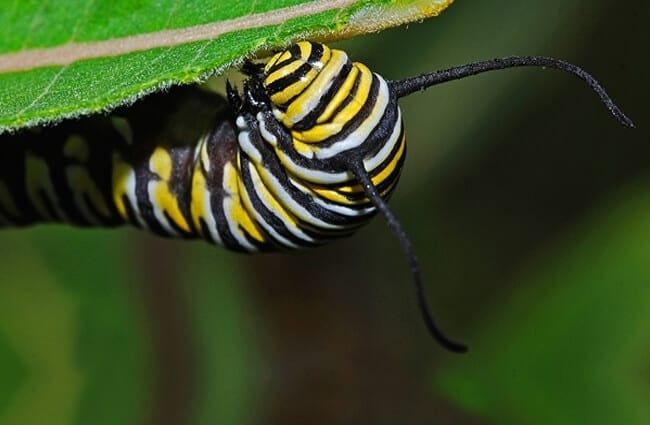


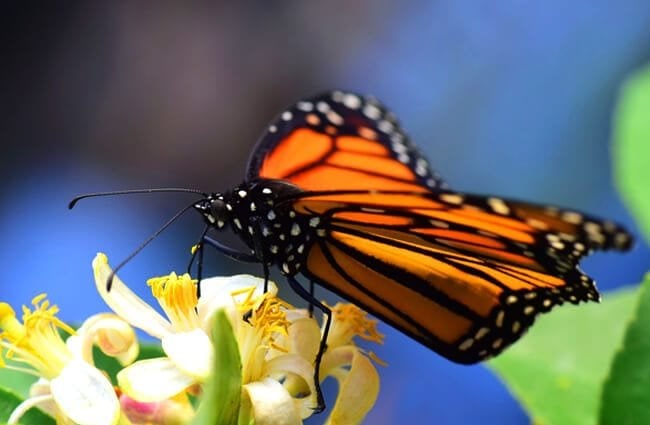
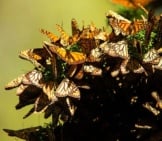
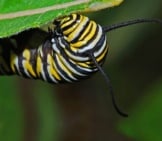

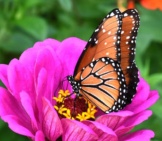
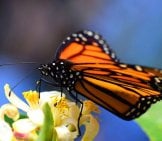

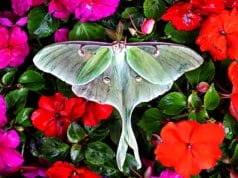
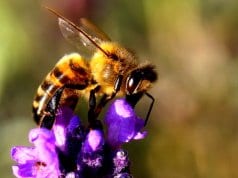










![Red Angus Closeup of a beautiful Red Angus cowPhoto by: U.S. Department of Agriculture [pubic domain]https://creativecommons.org/licenses/by/2.0/](https://animals.net/wp-content/uploads/2020/03/Red-Angus-4-100x75.jpg)

